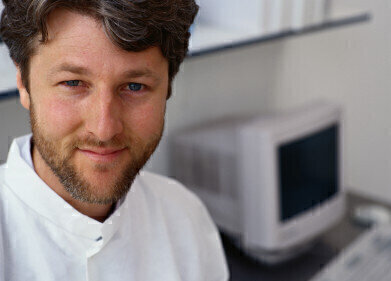Industrial news
The Role of Martin and Synge in the Birth of Modern Chromatography
Feb 03 2015
Chromatography is a standard analytical tool for today’s chemists and biochemists — found in most laboratories it is the key technique for separating compounds into their components. Many of the advances in chemistry and biology are based on new techniques being discovered in chromatography — leading to new molecules being discovered. The connection between the science of separation and chemistry is emphasised by the Dutch word for chemistry — scheikunde — which means ‘separation science’.
But this was not always the case. Chromatography was invented by Mikhail Tsvet in the 1900s — he separated the different pigments found in green leaves using tube packed with a solid material. And although this pointed the way to using columns to separate mixtures — the resolution was poor. But in 1942 a paper was published which changed chromatography forever.
A New Form of Chromatogram Employing Two Liquid Phases
Archer J.P. Martin and Richard L.M. Synge worked together at the Wool Industries Research Association in Leeds and in 1941 they published a paper entitled ‘A New Form of Chromatogram Employing Two Liquid Phases’ in the Biochemical Journal.
Martin and Synge described how they had used columns of silica with water, used as the stationary phase, whilst a second, non-miscible liquid, flowed down the column. The second liquid they used was the organic solvent chloroform, and they separated acetamino-acids from protein hydrolysates. The components of the mixture separated were distributed between the two phases, depending on their relative affinity for each of the phases. As the components spread, they became separated from each other, and could be collected as they left the column. The new form of chromatography that they described became known as ‘partition chromatography’ due to the way that the sample ‘partitioned’ itself between the two liquid phases.
A Step Change in Resolution
The paper written by Martin and Synge was important because it laid the foundations of all the future work in the field of chromatography. In the first part of the paper, Martin and Synge for the first time ever, presented a theory of chromatography that attempted to explain the concentration of the solute at any point in the column and also how the resolution of the column was affected by various factors including the column’s length. Looking at the figures they present for resolution in terms of HETP and you can see the importance of their work at that time.
The Height Equivalent to a Theoretical Plate (HETP) is a measure of the resolution that can be obtained by the column. There are several factors that affect HETP — for an introduction to HETP see this article on the Chromatography Today website — and the work by Martin and Synge gave an HETP of 0.002cm, previous separations with columns had only achieved an HETP of 1.0cm.
Nobel Prize Awarded
Martin and Synge were awarded the Nobel Prize in Chemistry in 1952 ‘for their invention of partition chromatography’. A remarkable piece of work carried out during WWII.
Events
May 11 2025 Vienna, Austria
May 18 2025 Tempe. AZ, USA
May 21 2025 Birmingham, UK
Jun 01 2025 Baltimore, MD, USA
Jun 15 2025 Bruges, Belgium














